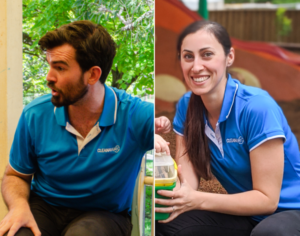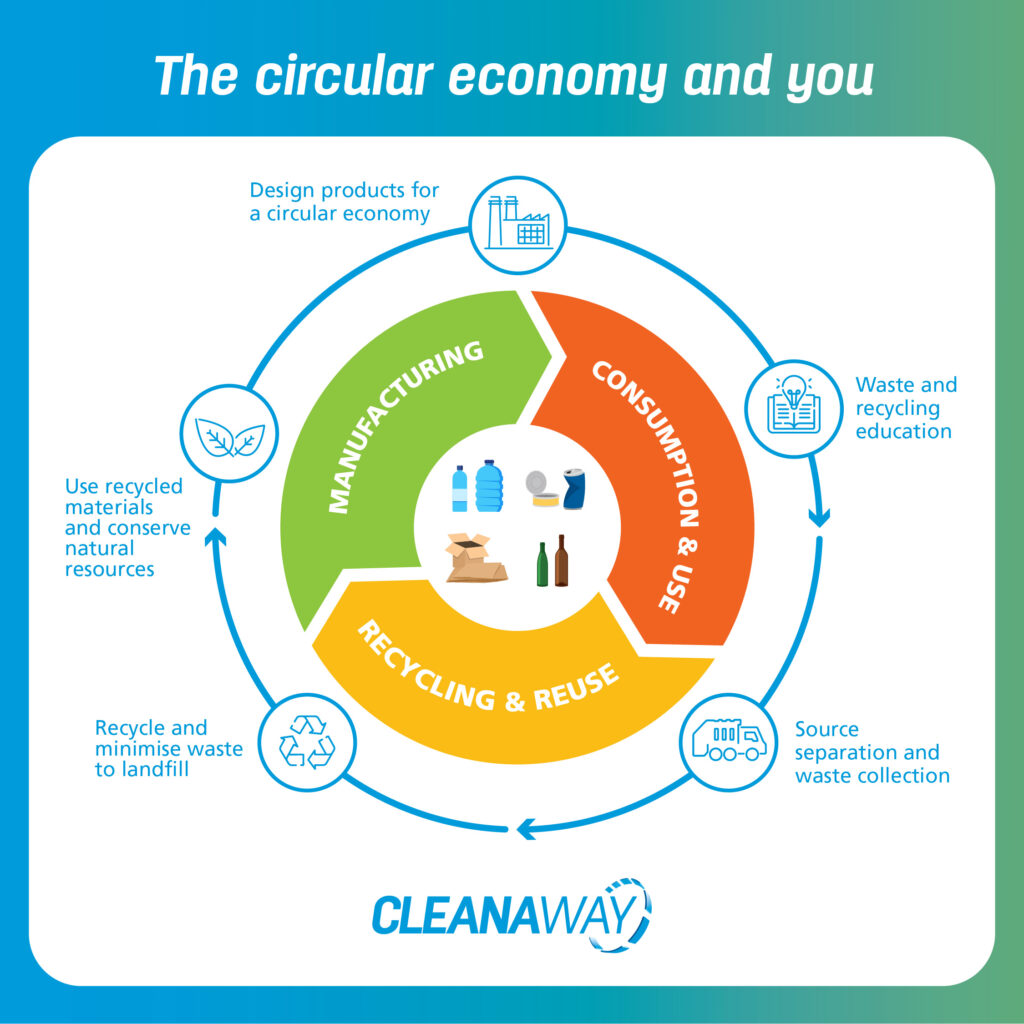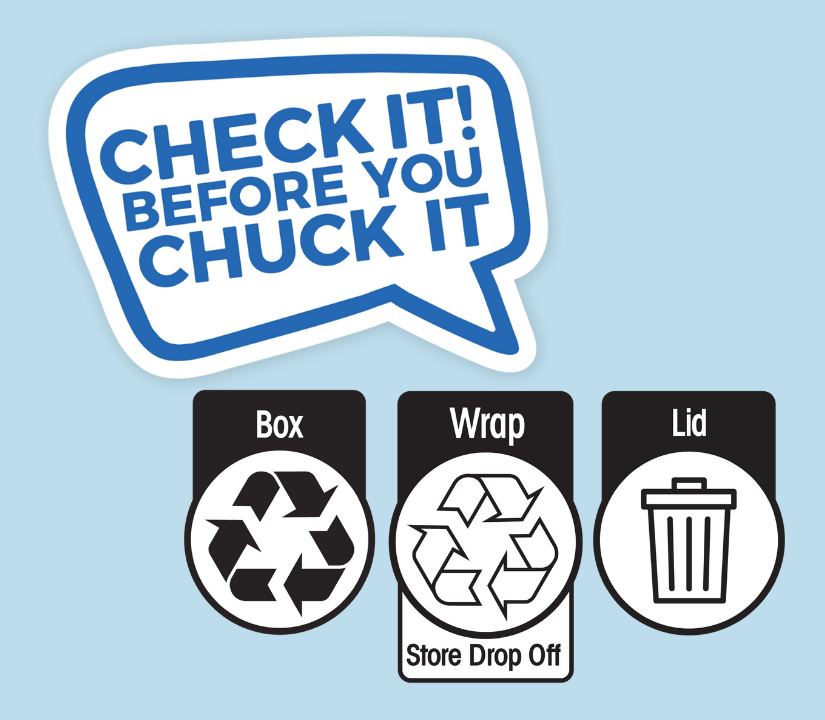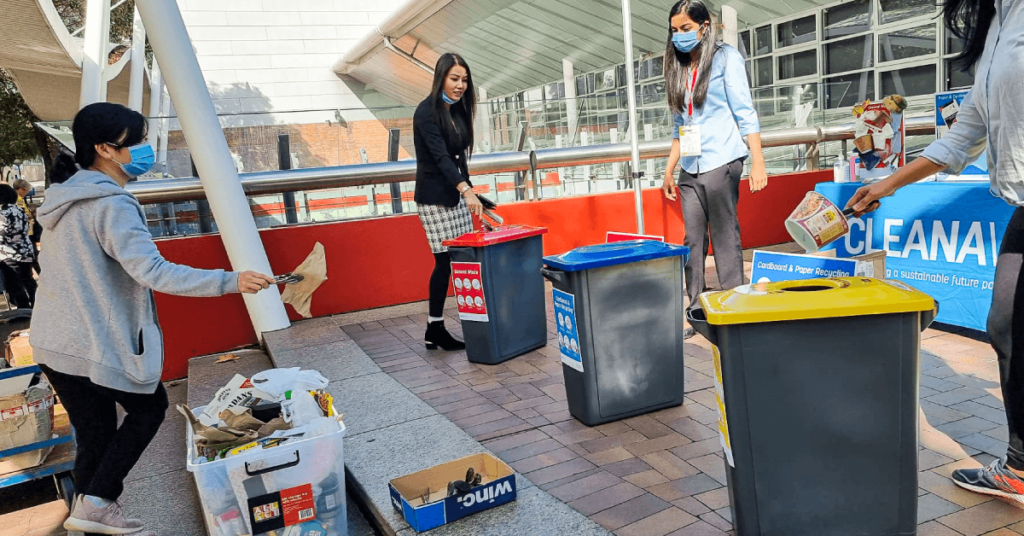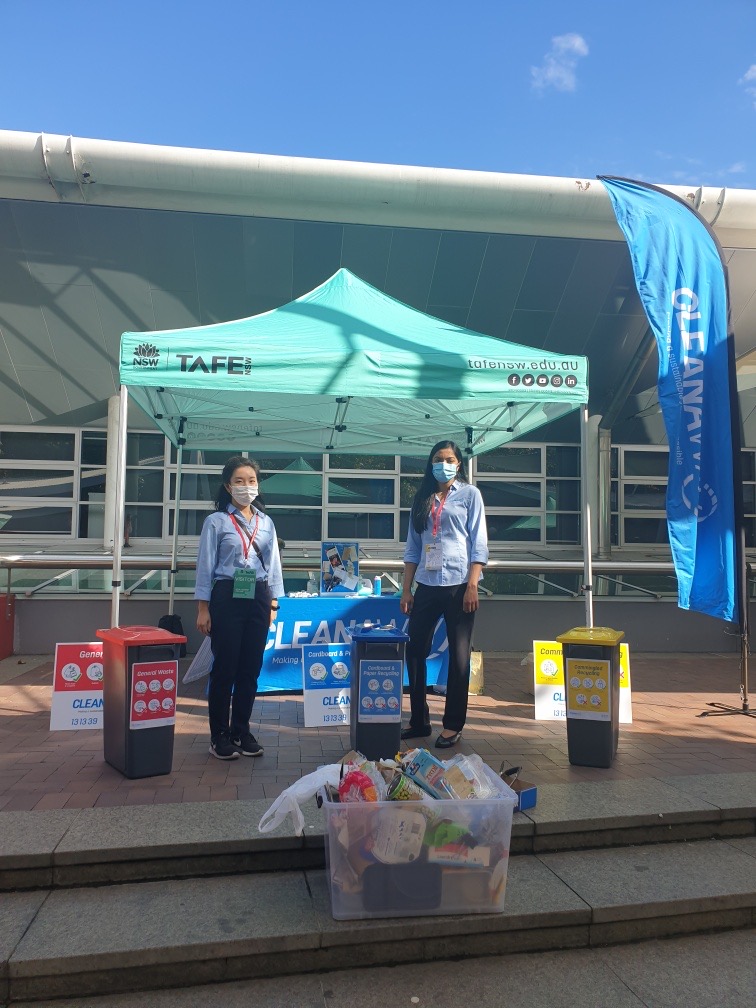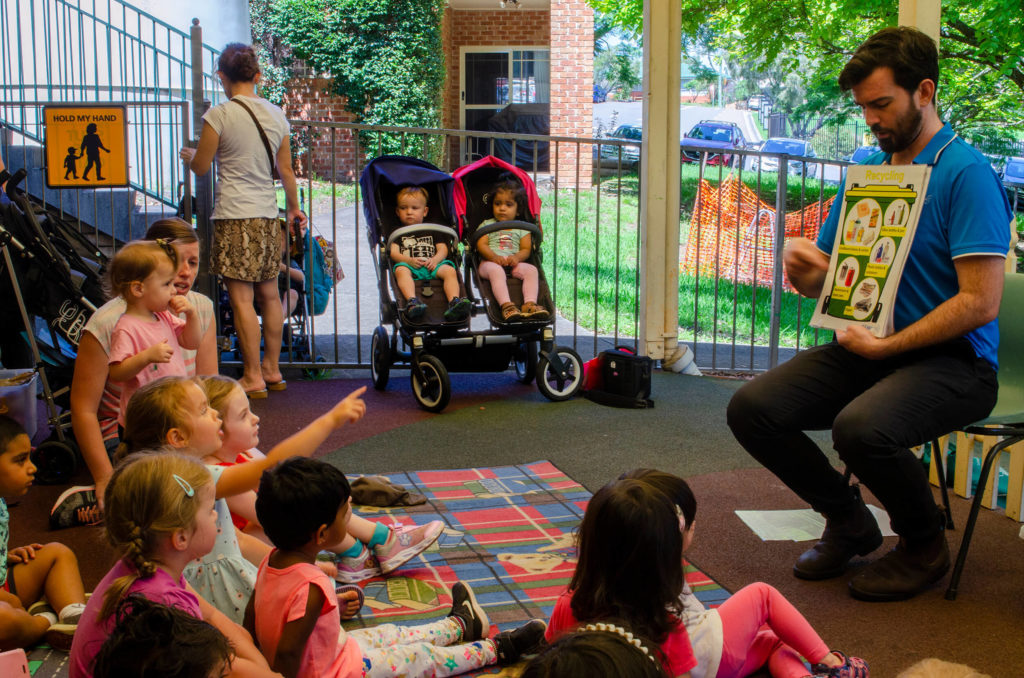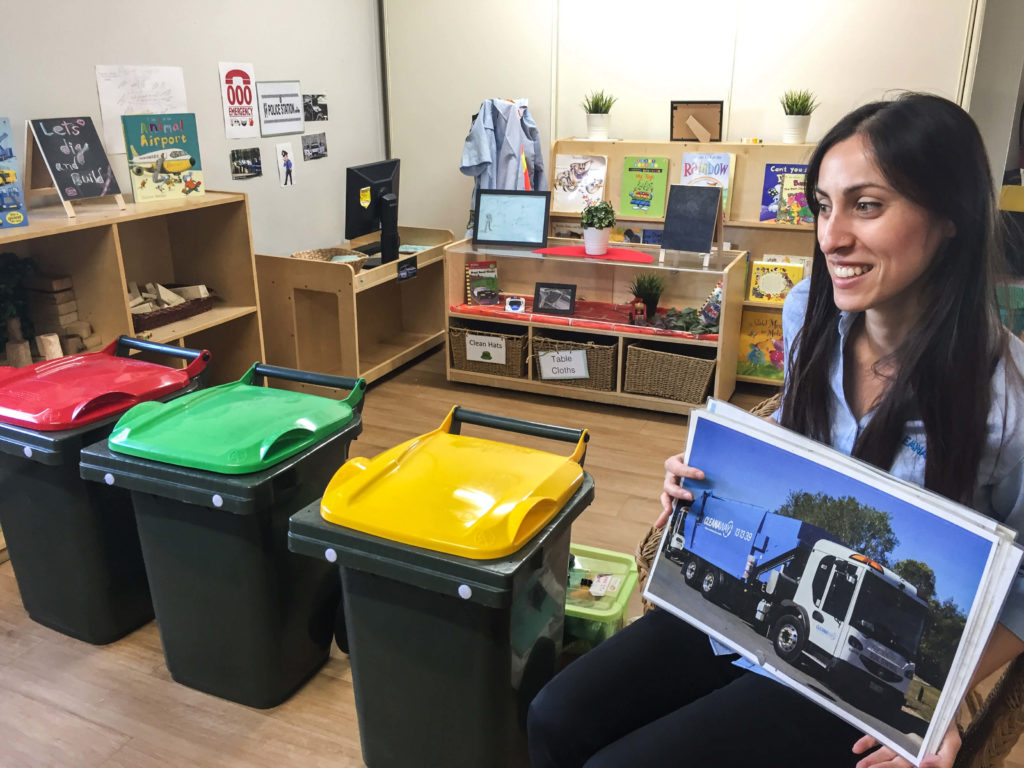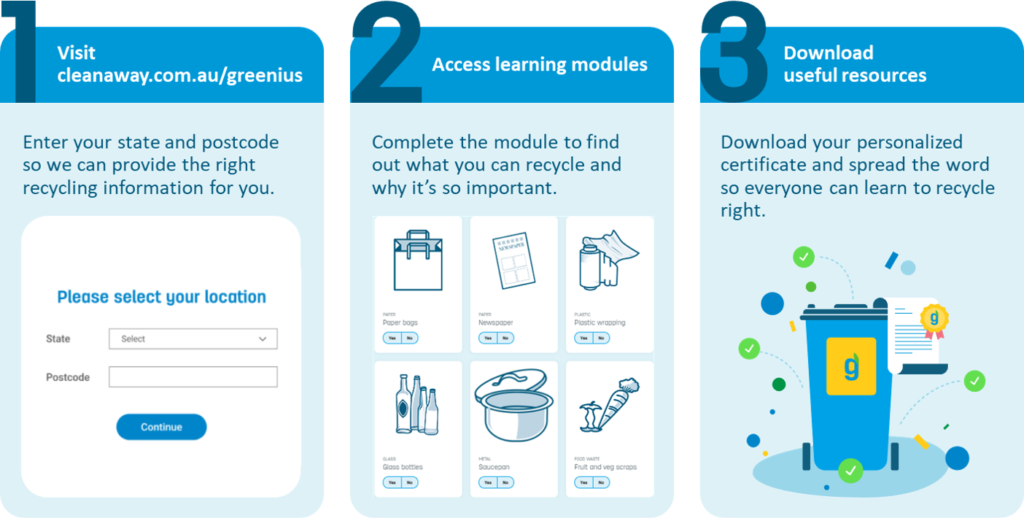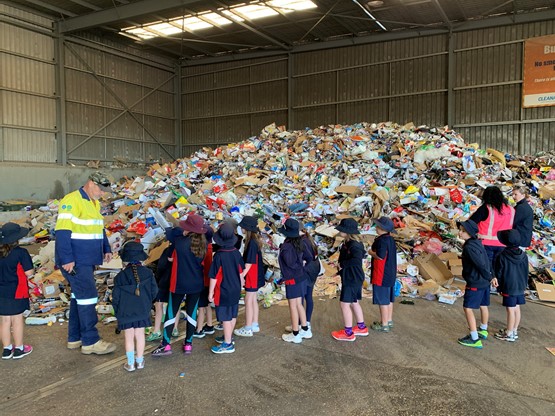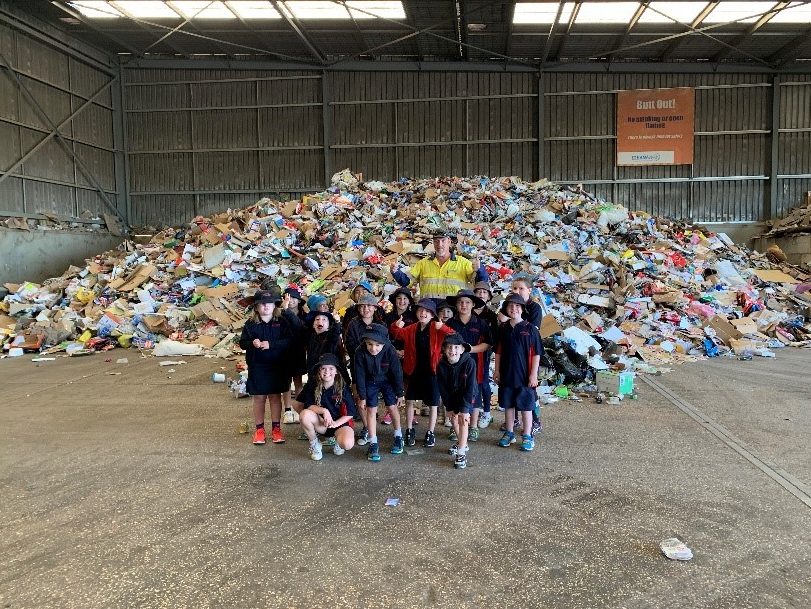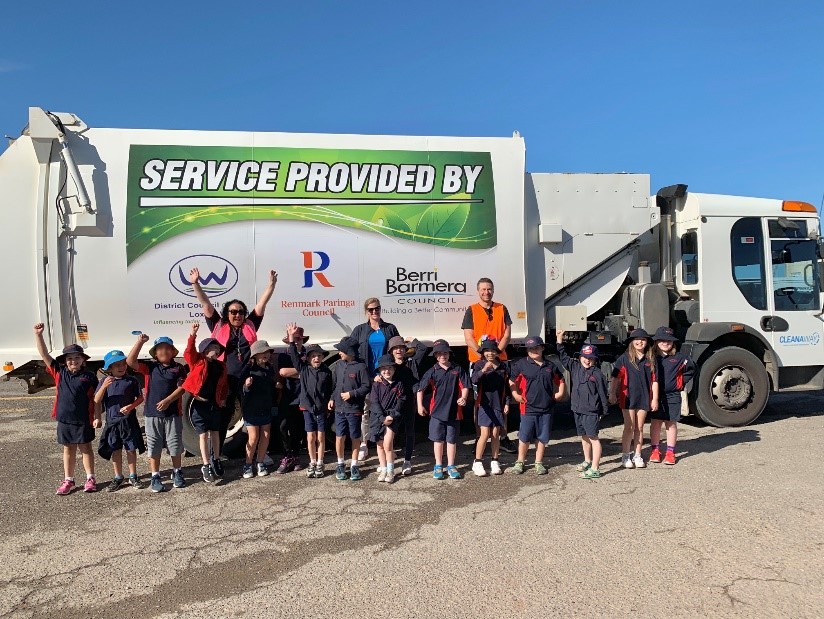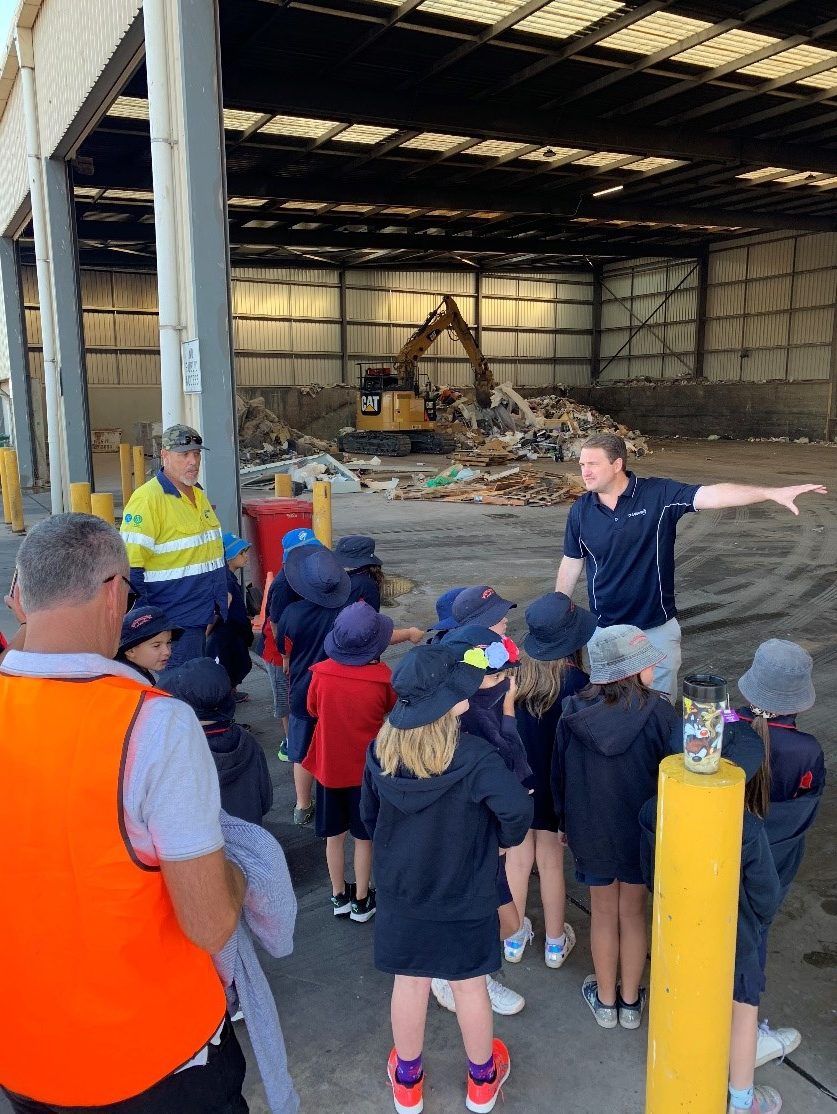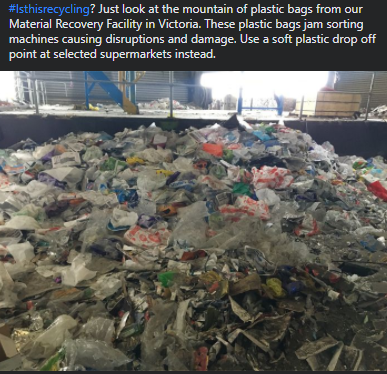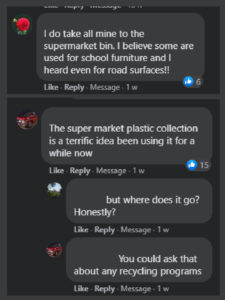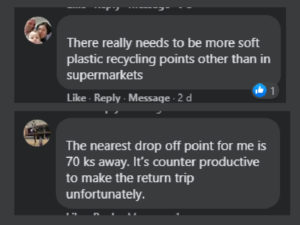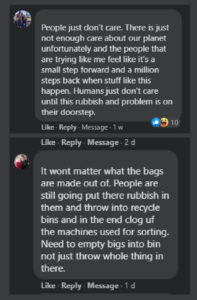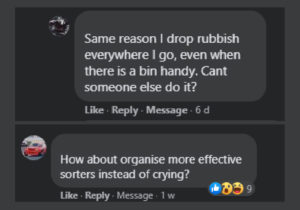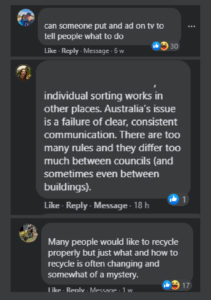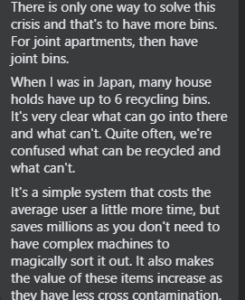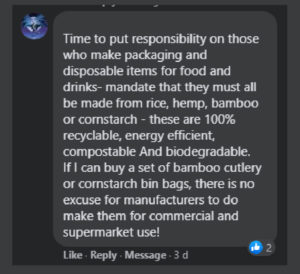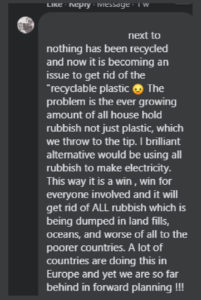Eco-grief - the grief felt in relation to experienced or anticipated ecological losses, including the loss of species, ecosystems and meaningful landscapes due to acute or chronic environmental change
Eco-grief - the grief felt in relation to experienced or anticipated ecological losses, including the loss of species, ecosystems and meaningful landscapes due to acute or chronic environmental change
 Cleanaway Waste Education Officer Andrew Snedden writes about what eco-grief means, why it’s important that we recognise it and how to find our way forward.
Cleanaway Waste Education Officer Andrew Snedden writes about what eco-grief means, why it’s important that we recognise it and how to find our way forward.
Andrew is an environmental educator. He works on educating communities on waste and environmental issues, and how to take action to make a sustainable future possible. He has a Master of Environmental Science from the University of Sydney. Please contact the author for a full list of references – Andrew Snedden Education Officer – Cleanaway’s NSW Centre for Sustainability
This article was first featured in Youthwise Magazine Autumn 2021 .
Introduction
The problems of the world can be overwhelming. The current climate and waste crises that we are facing are big, confronting, existential problems – they threaten humanity’s existence on this planet. Just trying to think about this stuff, let alone taking action, can have a big impact on our mental health. Lots of people are feeling sad, angry, and hopeless. This is a natural and legitimate response now known as Eco-Grief. By looking after ourselves, each other, and the planet we can find a path forward to a sustainable future. Looking after our planet can simply start with how we approach waste and recycling in our homes and schools. Read on to find out what you can do!
Background to the climate crisis
In case you need a little refresher, here is a short background in the climate and ecological crises. Reading this can be confronting, and it’s not meant to scare you. But it’s important to tell the truth.
Climate change is the current rapid warming of the earth’s climate. This is sometimes called global warming, and more recently – because of the urgency of the situation – the climate crisis (this is how I’ll refer to it throughout this article). Human activity is the major cause of the climate crisis, mostly through the emission of Green House Gases (GHG’s). Carbon dioxide and methane are two commonly known GHGs. There is a natural layer of GHG’s in the Earth’s atmosphere, which lets in sunlight and traps the heat that bounces off the earth’s surface. Human activity is releasing more GHG’s and thickening the layer in the atmosphere.
For example, the burning fossil fuels which releases carbon dioxide, deforestation and cutting down trees which normally help balance carbon dioxide levels, and dumping lots of waste in landfill which releases GHGs when it breaks down. This is changing the balance of GHG’s in the atmosphere and causing the rising global temperatures we see now. The evidence that human activity is the driving force behind the climate crisis is undeniable, and urgent action is needed to avoid a climate catastrophe.
What are the impacts of the climate crisis?
We are already seeing impacts of the climate crisis around the world. Scientists have been warning of more severe weather events, melting ice, droughts, floods, and bushfires for many years. In Australia, over the summer of 2019/20, we saw some of the worst bushfires we have ever seen. The fires burnt an estimated 18.6 million hectares, destroyed over 5000 buildings, displaced or killed over 3 billion animals, and killed 34 people. The climate crisis did not cause the bushfires, but it made them worse – the land was drier, and the temperature was hotter – the perfect conditions for massive bushfires. Scientists predict that events like this will be more severe and happen more frequently as the climate crisis worsens.
What about our waste?
In Australia, we throw away a lot of stuff. The National Waste Report 2020 estimated that Australia generated 74.1 million tonnes of waste in one year from July 2018 – June 2019. And the amount of waste Australian’s are making each year is increasing. This is a major problem.
When we throw something away, we waste all of the resources that were used in the making of that product. This includes the materials, energy, water, land, and labour. The Earth does not have an endless supply of resources. And we are already using more resources each year than the Earth can sustainably regenerate. The Global Footprint Network now estimates that we would need 1.6x Earths to sustain our current way of life. And that last year, humans used up the Earth’s resource budget for the entire year by August 22nd. We need to reduce the toll that humanity is taking on the Earth by reducing the amount we consume, and by re-using and recycling as much of our waste as possible.
The other major issue is waste sent to landfill. When we throw things away, they often end up in landfill. When the waste is breaking down in a landfill, the decomposing organic material generates methane. Methane is a GHG that contributes to climate change and is about 28x more potent than carbon dioxide. The Australia Bureau of Statistics has estimated that approximately 10% of Australia’s GHG emissions come from landfills.
What is eco-grief?
Hearing about and experiencing the impacts of the climate crisis can be really confronting. The effects on humans, animals, plants, ecosystems, and our planet earth are shocking and difficult to comprehend. This can impact our mental health in many ways as we grapple with coming to terms with the grief associated with climate-related losses to our valued species, ecosystems, and landscapes. The term ‘eco-grief’ (or ecological grief) has been coined to describe this response to ecological loss.
The term ecological grief was defined as “the grief felt in relation to experienced or anticipated ecological losses, including the loss of species, ecosystems and meaningful landscapes due to acute or chronic environmental change” (Cunsolo and Ellis,2018).
Grief is a normal human response to loss. When someone or something we love dies – a friend, a pet, a grandparent – we grieve. This is a natural and legitimate response to losing someone we love. While it can still be incredibly difficult, we understand that it is normal to grieve the loss of a person. We rarely extend the idea of this kind of grief to our feelings about our natural world. Eco-grief is a natural and legitimate response to the ecological loss you might be seeing on the news or on social media, and even experiencing first-hand. Everyone’s reaction will be unique to them.
You might feel sad, distressed, despairing, angry, fearful, helpless, hopeless, and stressed – or any combination of those feelings. It might make you feel anxious or depressed. It can make you want to switch-off, to stop the hurt and the grief. Feeling these emotions is not a bad thing – it means you care. It means you have empathy for the Earth and problems she faces. Without proper acknowledgement, and proper channels to express and work through these emotions, they can overpower us. We can get overwhelmed and feel stuck and helpless.
Remembering that you are not alone may be something that really helps. Lots of people, young and old, are muddling their way through anxiety, grief, and stuckness. Collective action, when we all join together and do something, can be a powerful way to not only feel less alone, but also to really make a difference. When we join together we have the power to help with the climate crisis and the feelings that come with it.
What to do with our eco-grief?
If you are feeling upset or overwhelmed by the climate crisis it’s important to acknowledge what you are feeling. Remember that these emotions are a perfectly normal response to what is happening in the world. It can also be helpful to talk to someone about it – a friend, a parent, a teacher. Ideally someone who will listen and try to understand. It’s important to not let these feelings bottle up inside. Just talking about it with someone will help lighten your mental load.
Getting help from a mental health professional is recommended – talk to your doctor about counselling or a psychologist. There is lots of support out there, especially for young people. And always look after yourself. Practice some self-care. This can look different for everyone, and what works for your friends might not work for you. Below are some basic self-care ideas, but do what is right for you:
- Take a break – while you might feel a sense of urgency to do something, we can’t solve everything right now. Pause, re-set, and start over.
- Breathe – take 3 deep breaths, in through your nose and out through your mouth. This will flood your brain with oxygen and help calm your mind.
- Exercise – whatever works for you: walking, running, tennis, football, yoga.
- Eat well – eat something healthy and nourishing. Lots of vegetables!
- Sleep – our bodies and minds don’t function very well if we don’t get enough sleep. Take a nap if you need to. And try to get as much sleep as is good for you.
What can we do about the climate crisis?
Any small action that we take counts. There are lots of different actions that we can all take. Not all of them will suit everyone. However, any positive action we take is doing a little bit of good. We can’t solve the climate crisis on our own, we can only do it together. Together with other individuals, businesses, corporations, NGO’s, and governments. Together we can change the world.
Here’s a few ideas to get started:
- Join the movement! There are lots of people all over Australia that are taking action on climate change. You could join your school environment club, or a School Strike 4 Climate. Do some research into what groups are active in your local area, and sign up!
- Walk or ride to school (reduce the number of car trips you take).
- Switch to renewable energy (use clean and green energy at home and at school).
- Eat more vegetables in your diet (eating more vegetables is healthier, and better for the planet!).
- Buy less plastic (plastic is made from fossil fuels).
- Buy less stuff (we consume a lot of stuff, and lots of it ends up getting wasted).
- Recycle (steel, aluminium, glass, hard plastic, paper/cardboard).
- Start composting or worm-farming (food scraps).
- Choose a bank that invests in renewable energy (make your money do good for the planet).
- Vote (when you’re 18).
- Collective action – the climate crisis is not any one person’s problem to solve by themselves. We cannot do it alone. The most powerful thing you can is add your voice and your actions to the movement. Together we can all put pressure on the people with power – governments, corporations, businesses – to make meaningful and sustainable change.
What can we do about the waste problem?
The answer is simple – we need to stop sending so much waste to landfill and reduce, reuse and recycle our rubbish. In fact, there is no such thing was waste – all waste is a resource! Everything that we throw away as rubbish actually has the potentially to be used again. We can look to the waste hierarchy to understand how we can think about our waste:
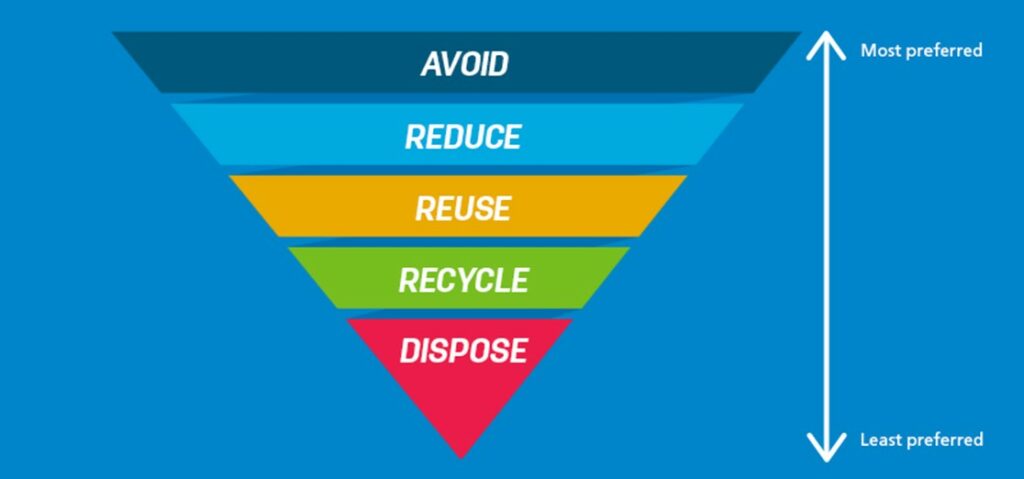
1. AVOID – the best thing we can do is to avoid making waste in the first place. For example, if you make good choices when you shop for food – such as buying loose bananas instead of packaged bananas – you can avoid creating any plastic packaging waste! We can also do things like storing our food in air-tight containers so it doesn’t go off.
2. REDUCE – reducing the amount of waste that we make is pretty easy. For example, if we purchase the right amount of food and serve the right amount on our plates, we can drastically reduce the amount of food waste we make.
3. REUSE – there are lots of options for reusing. For example you can use a reusable water bottle or a coffee cup, take reusable shopping bags to the shopping centre.
4. RECYCLE – you can recycle lots of the materials that are used in our products. The Top 5 materials that you can recycle are steel, aluminium, glass, hard plastic, and paper/ cardboard. If we all use our yellow-lidded recycling bin correctly we can save a lot of materials from going to landfill. Confused about recycling? Check out www.cleanaway.com/greenius to learn how to become a recycling eco-champ, or search for “Greenius” online.
Recycling can also include recycling your food scraps – you can do this with a compost bin, worm farm, bokashi bin. Some local councils have specialised bins for food scraps.
5. DISPOSE – the last option is to dispose of something in the red rubbish bin. Sometimes we have waste that needs to go in the red rubbish bin. This is always a good opportunity to assess ways to try and avoid this waste in the future. Remember – all waste is a resource! There’s no such thing as waste!
Other waste tips:
- Always check with your local council as to what can go in your recycling bins. Some councils have different systems.
- Remember to only put clean and dry items in your recycling bin – there should be no food scraps or liquids left in your recyclables. They should also be loose – NOT in a plastic bag.
- Tricky to dispose of items, such as batteries and lightbulbs, can often be recycled at your local Community Recycling Centre.
- Recycle your soft plastics, such as plastic bags and chip packets, by taking them back to the supermarkets (Coles and Woolworths) and putting them in the Redcycle bin.
- Check for the Australasian Recycling Label to see if you can recycle your items.
Greenius – a new way to learn about your bins. Greenius is a new e-learning platform for people to learn about recycling, contamination, and how to make the most of their waste services. It includes games, quizzes, and fun learning modules. Search “Greenius” online, or visit www.cleanaway.com.au/greenius
The good news about waste
While Australia is still generating a lot of waste, and lots of it is ending up in landfill, there is still some good news! The waste industry employs lots of people whose job it is to try and find solutions for these problems. Some of these solutions include:
Organics recycling – some local councils in Australia have started collecting and recycling organic food waste. Some have started Food Organics collections, others have FOGO (Food Organics Garden Organics) collections. This means that they can recycle the food and organic waste and turn it into compost.
Compost is used in gardens and farms to regenerate the soil – adding precious nutrients, increasing the water holding capacity, adding healthy bacteria and microbes, and locking carbon in the soil. Recycling organics can happen in several ways. Two common ones are:
Composting – a process of letting organic material break down over a number of weeks/ months in the ideal conditions for it to turn into healthy compost.
Anaerobic Digestion (AD) – organic waste is added to a large tank with lots of water. The organic material is turned into a sludge and can be dried and used as fertilizer, while any gas that is produced can be captured and used for energy. This process is similar to what happens in a human stomach.
Landfill Gas Capture – some landfills in Australia are now capturing the GHG’s (like methane) that are emitted from them. Instead of releasing the gas into the atmosphere, the gas is captured in pipes and can be used to make energy or power garbage trucks.
Bioplastics – single-use plastics are a huge problem. Normal plastics take hundreds or thousands of years to breakdown. Every piece of plastic that has ever been created is still present somewhere on Earth, and it’s estimated that by 2050 the amount of plastic in the ocean will weigh more than all of the fish! Bioplastics are a new type of plastic that have been created – some are made from cornstarch, others from a material called PLA. These bioplastics can be broken down in an industrial composting system or an anaerobic digestor.
Circular economy – is a new concept that describes a systemic, holistic approach to an economic system that is aimed at eliminating waste and keeping materials in continual use. The whole economy – from big and small business, designers and manufacturers, producers and consumers – can work together to design out waste and pollution, keep products and materials in use, and regenerate natural systems.
There is always hope!
We are facing some big problems. The climate and waste crises are not going to solve themselves, and they can make us feel overwhelmed and hopeless. Acknowledging these feelings of eco-grief is not submitting to despair, it’s not giving up. We need to look after ourselves, and each other. There is a path forward – it includes working together and doing whatever we can to help.
On finding hope amongst the chaos, Gail Bradbrook, an environmental activist, said “I can’t think of anything else I would rather do with my life. It is such an honour to try. What else can we all do?”
